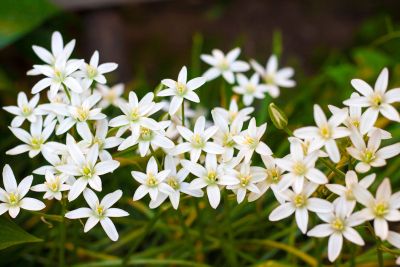Star of Bethlehem flowers, though attractive for a few weeks when in bloom, have escaped cultivation in many areas. When this happens, they quickly become a danger to native plant life.
Star of Bethlehem Facts
This plant can quickly out-perform and take over when planted in beds with other ornamental bulbs. Landscapers tell horror stories about trying to get rid of Star of Bethlehem flower bulbs in lawns. This is a shame, because when growing Star of Bethlehem in the garden, it is an attractive addition in the beginning. Small, star-shaped flowers rise on stems above draping foliage. However, Star of Bethlehem facts conclude that it is safest to grow this plant in containers or areas where it may be kept confined. Many agree that it is best not to plant it at all. Some say Star of Bethlehem flowers are good companion plants for early blooming hellebores and dianthus. Others remain steadfast in the notion that the plant is a noxious weed and should never be planted as an ornamental. In fact, Star of Bethlehem flowers are labeled noxious in Alabama, and are on the invasive exotic list in 10 other states.
Growing Star of Bethlehem
If you decide to plant Star of Bethlehem flower bulbs in your landscape, do it in fall. The plant is hardy in USDA Zone 3 with mulch and grows in Zones 4 to 8 without mulch. Plant Star of Bethlehem flower bulbs in a full to mostly sunny area of the landscape. This plant can take 25 percent shade, but grows best in full sun location. Star of Bethlehem flower bulbs should be planted about 2 inches (5 cm.) apart and at a depth of 5 inches (13 cm.) to the base of the bulb. To ward off invasive tendencies, plant in a buried container or an area that is lined and edged so that bulbs can only spread so far. Deadhead flowers before seeds develop. Star of Bethlehem plant care is not necessary, except to prevent the abundant spread. If you find the plant becoming too prolific, Star of Bethlehem plant care requires removal of the entire bulb to stop its growth.
